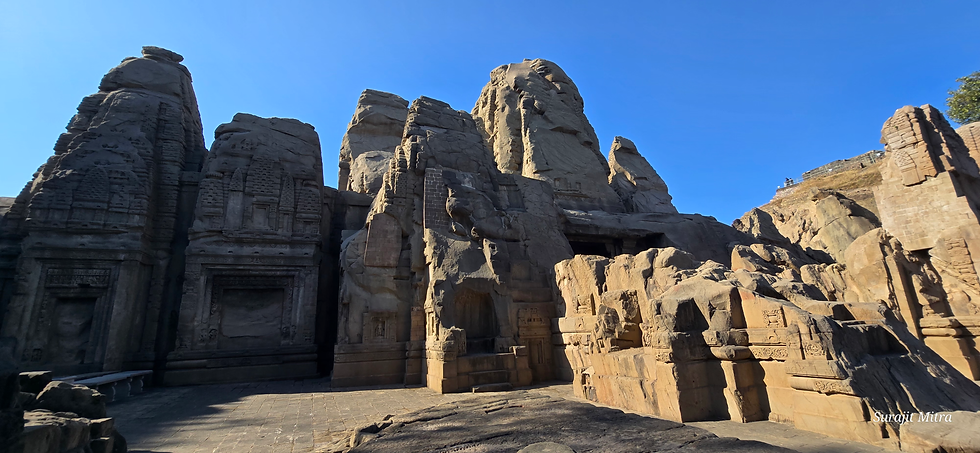Masrur Rock-Cut Temples: Himachal’s Hidden Architectural Marvel
- Anu Writes 73

- Jun 30
- 3 min read
Updated: Jul 4
The Masrur Rock-Cut Temples, an ancient wonder that frequently goes unnoticed by tourists, are nestled among the verdant hills of the Kangra Valley in Himachal Pradesh. Known as the "Himalayan Ellora," this architectural wonder from the eighth century is a tribute to India's rich history and artistry. The Masrur temples are a unique and breathtaking sight because they were carved out of a single rock, in contrast to most temples that are constructed from the ground up.

The Masrur temples, which are thought to have been built in the eighth or ninth century during the Katoch dynasty, combine Nagara and Indo-Aryan architectural elements. Out of the original fifteen monolithic temples of the complex, symmetrically arranged around a central sanctum, only a small number still stand. The rock-cut technique of the temple complex, though reminiscent of the Ajanta and Ellora caves, has a distinctly Himalayan influence, which really sets it apart from the rest. The pyramidal design of the temple is reminiscent of the shikhara (spire) architecture of North India. The central temple is surrounded by smaller shrines, all interconnected by beautifully carved passages. The snow-capped Dhauladhar range, which is in front of these temples, provides a striking and breathtaking backdrop. A sacred water tank in front of the shrines reflects the entire structure, adding a sense of serenity to the site.

The intricate sculptures of mythological characters, gods, and goddesses that adorn the walls of the temples demonstrate the craftsmanship of the ancient artisans. Despite their weathered state, the details of the sculptures demonstrate superb artistic skills. The play of light and shadow on the sandstone carvings during sunrise and sunset adds a mystical aura to the site. Carvings of Hindu deities like Shiva, Vishnu, and Devi adorn the walls, while the temple spires rise like frozen flames from the earth, echoing the energy of divine ascent. Unfortunately, the temples were partially damaged during the devastating Kangra earthquake of 1905, leaving some sculptures and carvings incomplete or broken.
The location of Masrur is one of its greatest mysteries. The main sanctum of the temples is illuminated by the first rays of the sun during the spring and autumn equinoxes, indicating an advanced astronomical knowledge of its creators.
Resemblance of the Masrur temple complex to the Angkor Wat in Cambodia is another fascinating feature that has led some historians to hypothesize a potential cultural exchange between Indian and Southeast Asian civilizations during that era.

Compared to the other rock-cut temples found in India, Masrur is still underrated despite its historical significance. Although there are ongoing preservation efforts, responsible tourism and greater awareness can help protect this hidden gem for future generations. According to local legends, the Pandavas constructed the temples during their exile. While the myth adds to its mystique, the Masrur temples remain an extraordinary example of early Himalayan rock-cut architecture. They provide a profound and peaceful experience of art, devotion, and timeless beauty despite their relative obscurity - waiting to be rediscovered by heritage lovers and spiritual seekers alike.
The Masrur Rock-Cut Temples are not just a place of worship but a marvel of prehistoric engineering and artistic creation. If you’re a history lover, a heritage enthusiast, or simply someone who loves offbeat destinations, Masrur should be on your Himachal travel list.
Have you visited Masrur? Share your experiences in the comments!




Wonderful discovery.. thanks